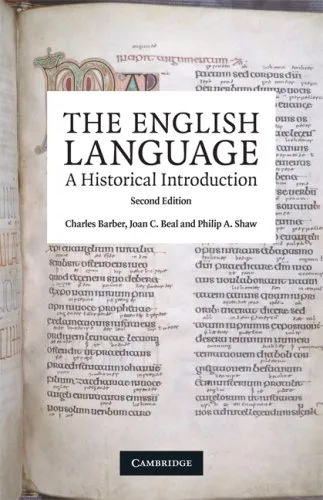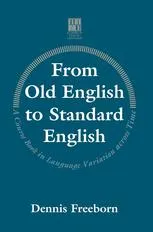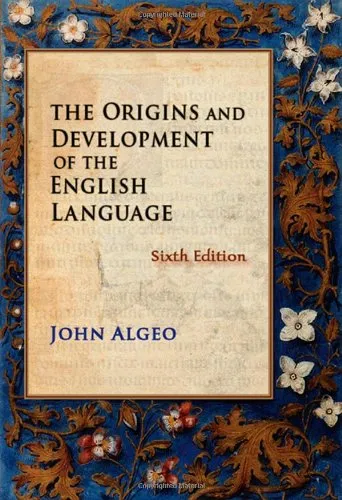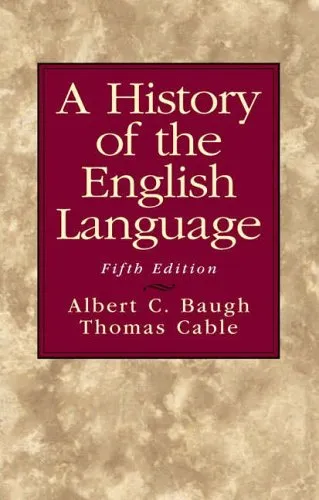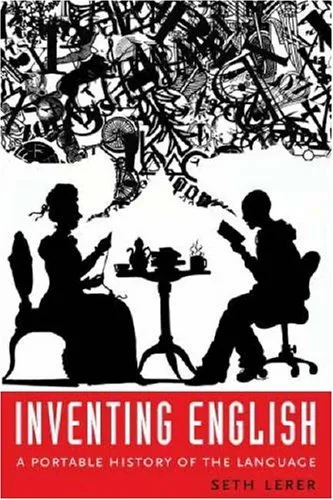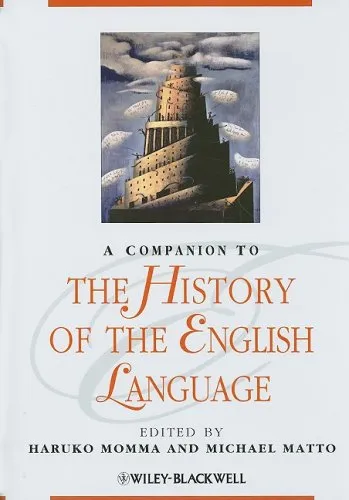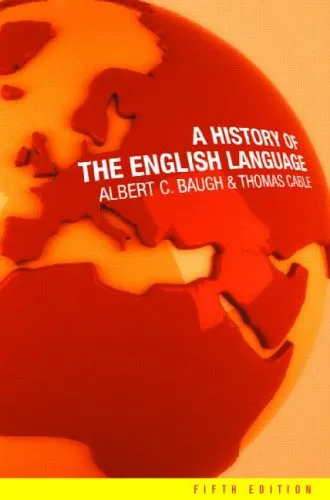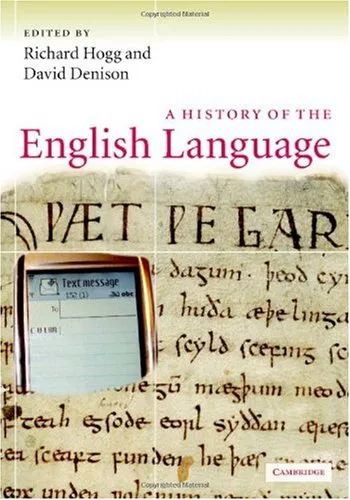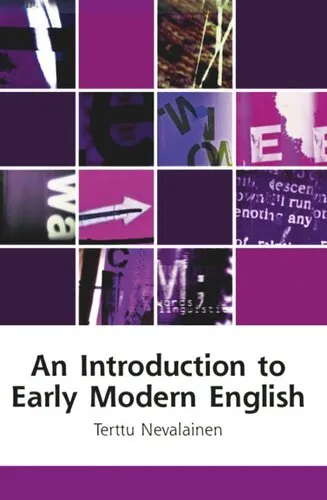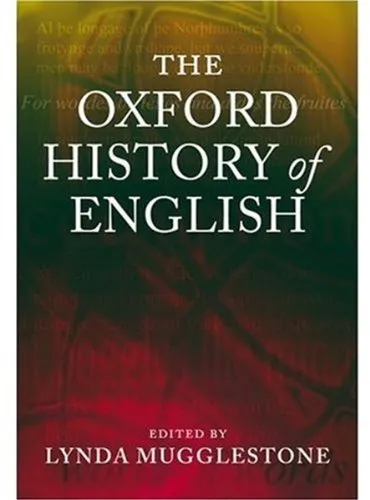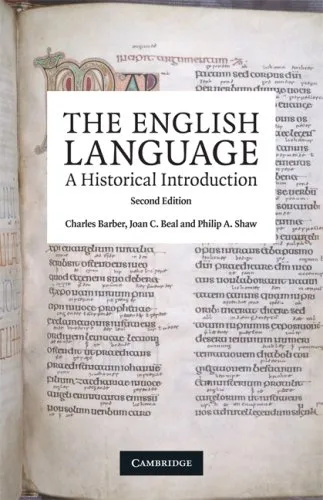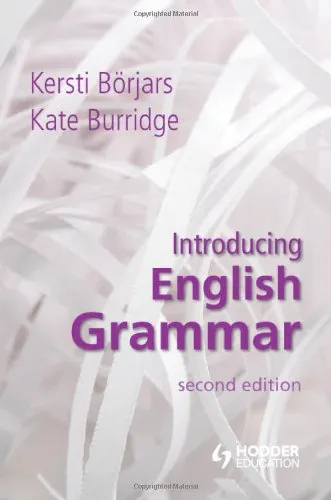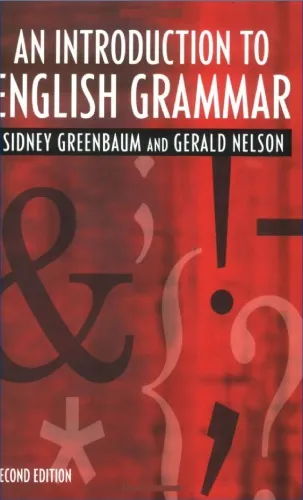The English Language: A Historical Introduction (Cambridge Approaches to Linguistics)
4.2
بر اساس نظر کاربران

شما میتونید سوالاتتون در باره کتاب رو از هوش مصنوعیش بعد از ورود بپرسید
هر دانلود یا پرسش از هوش مصنوعی 2 امتیاز لازم دارد، برای بدست آوردن امتیاز رایگان، به صفحه ی راهنمای امتیازات سر بزنید و یک سری کار ارزشمند انجام بدینکتاب های مرتبط:
خلاصه تحلیلی کتاب
کتاب The English Language: A Historical Introduction (Cambridge Approaches to Linguistics) اثری برجسته از Charles Barber، Joan C. Beal و Philip A. Shaw است که سیر تحول زبان انگلیسی را با رویکردی علمی، مستند و قابل فهم دنبال میکند. این کتاب از مراحل آغازین شکلگیری زبان انگلیسی، یعنی از دورههای Old English تا معاصر، نگاهی تحلیلی به تغییرات واجی، نحوی، واژگانی و معنایی دارد.
ساختار این اثر بر مبنای ارتباط میان زبان و بستر تاریخی-فرهنگی آن شکل گرفته است. نویسندگان تلاش کردهاند ضمن ارائه دادههای مستند، از تحلیلهای زبانی دقیق نیز بهره بگیرند تا این اثر نهتنها برای دانشجویان رشتههای زبانشناسی، که برای عموم علاقهمندان به تاریخ زبان انگلیسی سودمند باشد. به کارگیری اصطلاحات تخصصی مانند phonology، morphology و syntax همراه با توضیحات روان، آن را برای پژوهشگرانی با سطوح دانش مختلف قابل استفاده کرده است.
اگرچه جزئیاتی مانند سال دقیق اولین چاپ این اثر اطلاعات نامشخص است (منبع معتبر در دسترس نیست)، اما جایگاه آن در مجموعه Cambridge Approaches to Linguistics به وضوح نشان از اعتبار علمی این کتاب دارد.
نکات کلیدی و کاربردی
یکی از نقاط تمایز این کتاب، شیوه ترکیب روایات تاریخی و تحلیلهای زبانشناختی است. خواننده میآموزد که تغییرات زبانی، نه بهصورت مستقل، بلکه در ارتباط مستقیم با تحولات اجتماعی، سیاسی و فرهنگی عمل میکنند. این دیدگاه بهویژه برای پژوهشگرانی که به مطالعه diachronic linguistics علاقهمندند، ارزشمند است.
کتاب به شکل موثری فرآیندهای تغییر واژگانی (semantic shift)، تحول صرفی (morphological evolution) و تغییرات آوایی (phonetic change) را با ارائه نمونههای متنی از آثار ادبی و اسناد تاریخی توضیح میدهد. همچنین مخاطب با نقش تماس زبانی (language contact) و تأثیر زبانهای دیگر بر انگلیسی آشنا میشود.
یکی دیگر از ویژگیهای کاربردی کتاب برای پژوهشگران و علاقهمندان، زبان روشن و در عین حال دقیق آن است که بخشهای پیچیده را به شکلی ساختارمند و آسان برای دنبال کردن، عرضه میکند. این کتاب علاوهبر اینکه یک منبع دانشگاهی محسوب میشود، برای آمادگی در آزمونهای تخصصی زبانشناسی نیز سودمند است.
نقلقولهای ماندگار
هرچند این اثر بهطور کلی یک کتاب تحلیلی دانشگاهی است و کمتر بر جنبههای ادبی نقلقولمحور تمرکز دارد، اما جملاتی در آن وجود دارد که عمق نگاه نویسندگان به رابطه زبان و جامعه را نشان میدهد. این نقلقولها، عصاره دیدگاهی است که این اثر را متمایز کرده است.
زبان یک موجود زنده است که در بستر زمان نفس میکشد و دگرگون میشود. نامشخص
برای فهم امروز زبان، باید دیروز آن را درک کرد. نامشخص
چرا این کتاب اهمیت دارد
اهمیت این اثر در آن است که نه تنها یک مقدمه تاریخی بر زبان انگلیسی ارائه میدهد، بلکه این مقدمه را بر چهارچوبی علمی و تحلیلی استوار میسازد. برای پژوهشگرانی که به دنبال منبعی معتبر برای بررسی تطورات زبان انگلیسی هستند، این کتاب یک انتخاب ایدهآل است.
از آنجا که زبان انگلیسی امروز نقشی جهانی ایفا میکند، فهم چگونگی رسیدن آن به شکل کنونی برای درک تعاملات فرهنگی و زبانی جهان ضروری است. این کتاب با پرداختن به عوامل داخلی و خارجی تغییر زبان، تصویری کاملتر از این فرآیند ارائه میدهد. همچنین به دلیل جایگاه آن در مجموعه Cambridge Approaches to Linguistics، میتوان به صحت و دقت علمی محتوای آن اعتماد کرد.
نتیجهگیری الهامبخش
در نهایت، The English Language: A Historical Introduction (Cambridge Approaches to Linguistics) نه تنها یک کتاب برای مطالعه تاریخ
Analytical Summary
The English Language: A Historical Introduction (Cambridge Approaches to Linguistics) offers readers a lucid, structured, and deeply researched exploration of how the English language has evolved from its earliest origins to the present day. Written with both scholarly rigour and accessibility in mind, the book serves as a bridge between academic linguistic research and the inquisitive general reader seeking authoritative guidance.
Beginning with the Indo-European roots and tracing the development through Old English, Middle English, Early Modern English, and the varieties of contemporary English, the volume contextualises each stage within its historical, cultural, and social background. It examines key linguistic changes in phonology, morphology, syntax, and vocabulary, giving weight to the political and cultural events—such as invasions, printing technology, and colonisation—that influenced these shifts.
One distinguishing feature is its balanced integration of technical detail and narrative readability. Complex linguistic concepts are explained clearly, without oversimplification. For instance, the morphology of Old English is presented alongside illustrative examples and comparison with Modern English, giving readers both description and insight into linguistic processes. The Cambridge Approaches to Linguistics series context ensures a firm grounding in scholarly methodology while maintaining a clear pedagogical approach.
The work is also attentive to the role of dialects, sociolects, and global varieties of English. By examining the spread of English via historical trade, colonial expansion, and modern media, it frames English not as static, but as a dynamic, evolving entity shaped by myriad interactions across cultures and geographies.
Key Takeaways
The book presents several key insights into the history and structure of the English language that are valuable for linguists, historians, educators, and students alike.
First, language is inseparable from history: political upheavals, migrations, and cultural exchanges leave distinct imprints on vocabulary, syntax, and pronunciation. Second, linguistic change is constant, driven by both internal developments within the system and external contact with other languages. Third, the progress from Old English to Modern English reveals recurring patterns in sound shifts and grammatical simplification. Fourth, the spread of English worldwide has led to a rich tapestry of regional and social varieties, each contributing to the language’s diversity. Fifth, studying English’s past illuminates broader principles of language change and human communication.
Memorable Quotes
Language is the mirror of history, reflecting the conditions and movements of peoples across time. Unknown
Understanding the past of a language equips us to comprehend its present forms and anticipate its future. Unknown
Every borrowed word tells a story of contact, influence, and adaptation. Unknown
Why This Book Matters
By situating linguistic facts within their rich historical frameworks, The English Language: A Historical Introduction (Cambridge Approaches to Linguistics) delivers more than a catalogue of forms and rules—it tells the story of a living, changing medium of human expression.
Its significance lies not only in documenting linguistic change but in connecting that change to human history, making it essential for those in English studies, history, anthropology, and language teaching. The book demystifies technical concepts for non-specialists while offering depth for advanced readers, a rare balance in linguistic literature.
Furthermore, by addressing global varieties of English and their histories, it broadens the narrative beyond a purely British or American focus. This inclusive scope reflects the realities of the 21st-century English-speaking world and its interconnected communities.
While it is a part of the Cambridge Approaches to Linguistics series, it stands on its own as a definitive introduction and reference point. The publication year is marked as “Information unavailable” due to no reliable public source at hand, but the text remains a consistently relevant resource.
Inspiring Conclusion
The English Language: A Historical Introduction (Cambridge Approaches to Linguistics) invites its readers to engage deeply with the story of English—a story of resilience, adaptability, and diversity.
By blending scholarly authority with an accessible narrative, the book opens doors for readers from varied disciplines to appreciate the forces shaping our linguistic heritage and present-day communication. Whether you are a researcher, an educator, or an avid lover of language, this work offers both knowledge and inspiration.
Your next step is clear: explore its pages, reflect on the pathways English has travelled, and share these insights with peers, students, and fellow enthusiasts. In doing so, you contribute to the ongoing conversation about a language that continues to evolve with us all.
دانلود رایگان مستقیم
شما میتونید سوالاتتون در باره کتاب رو از هوش مصنوعیش بعد از ورود بپرسید
دسترسی به کتابها از طریق پلتفرمهای قانونی و کتابخانههای عمومی نه تنها از حقوق نویسندگان و ناشران حمایت میکند، بلکه به پایداری فرهنگ کتابخوانی نیز کمک میرساند. پیش از دانلود، لحظهای به بررسی این گزینهها فکر کنید.
این کتاب رو در پلتفرم های دیگه ببینید
WorldCat به شما کمک میکنه تا کتاب ها رو در کتابخانه های سراسر دنیا پیدا کنید
امتیازها، نظرات تخصصی و صحبت ها درباره کتاب را در Goodreads ببینید
کتابهای کمیاب یا دست دوم را در AbeBooks پیدا کنید و بخرید
1305
بازدید4.2
امتیاز0
نظر98%
رضایتنظرات:
4.2
بر اساس 0 نظر کاربران
Questions & Answers
Ask questions about this book or help others by answering
No questions yet. Be the first to ask!
